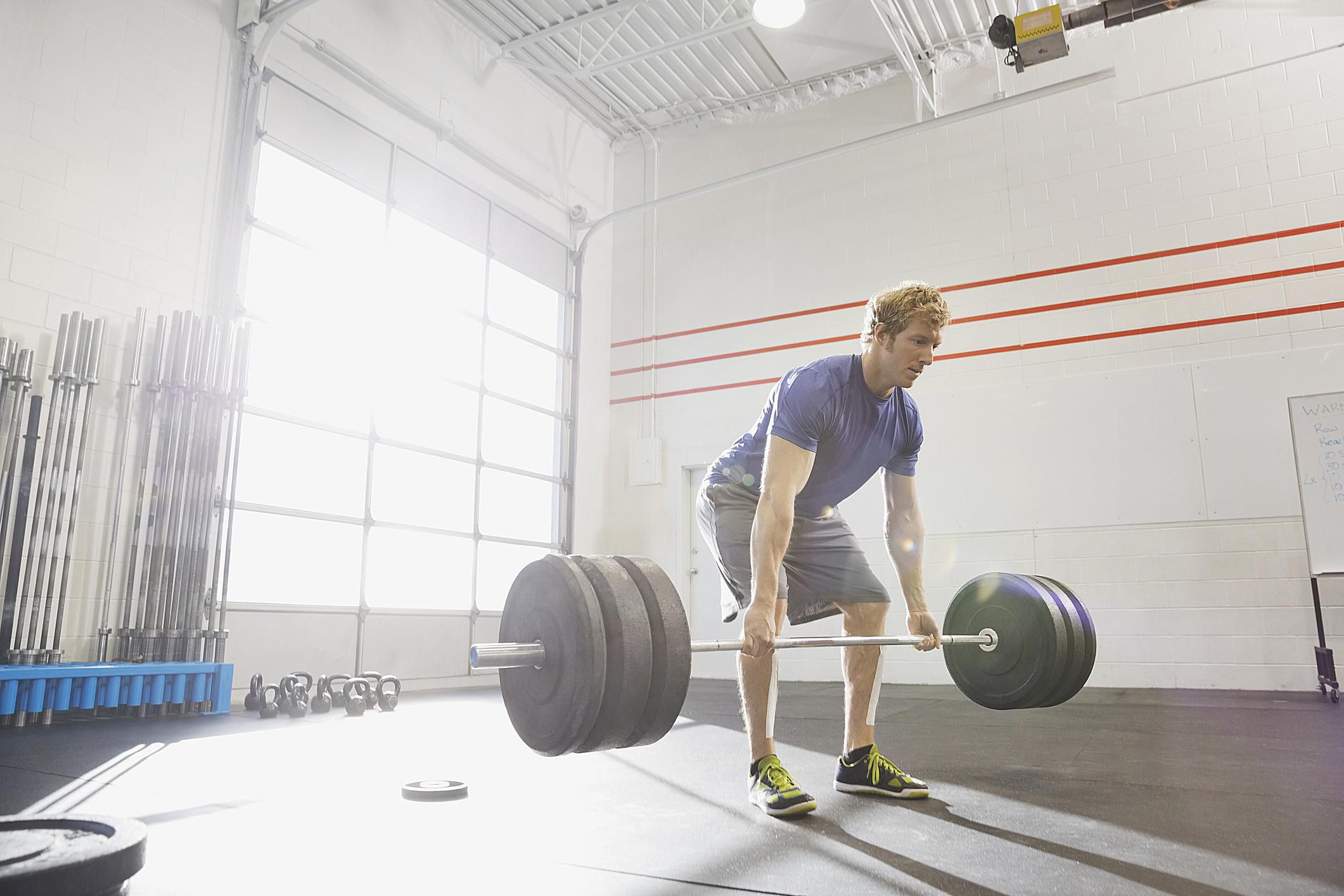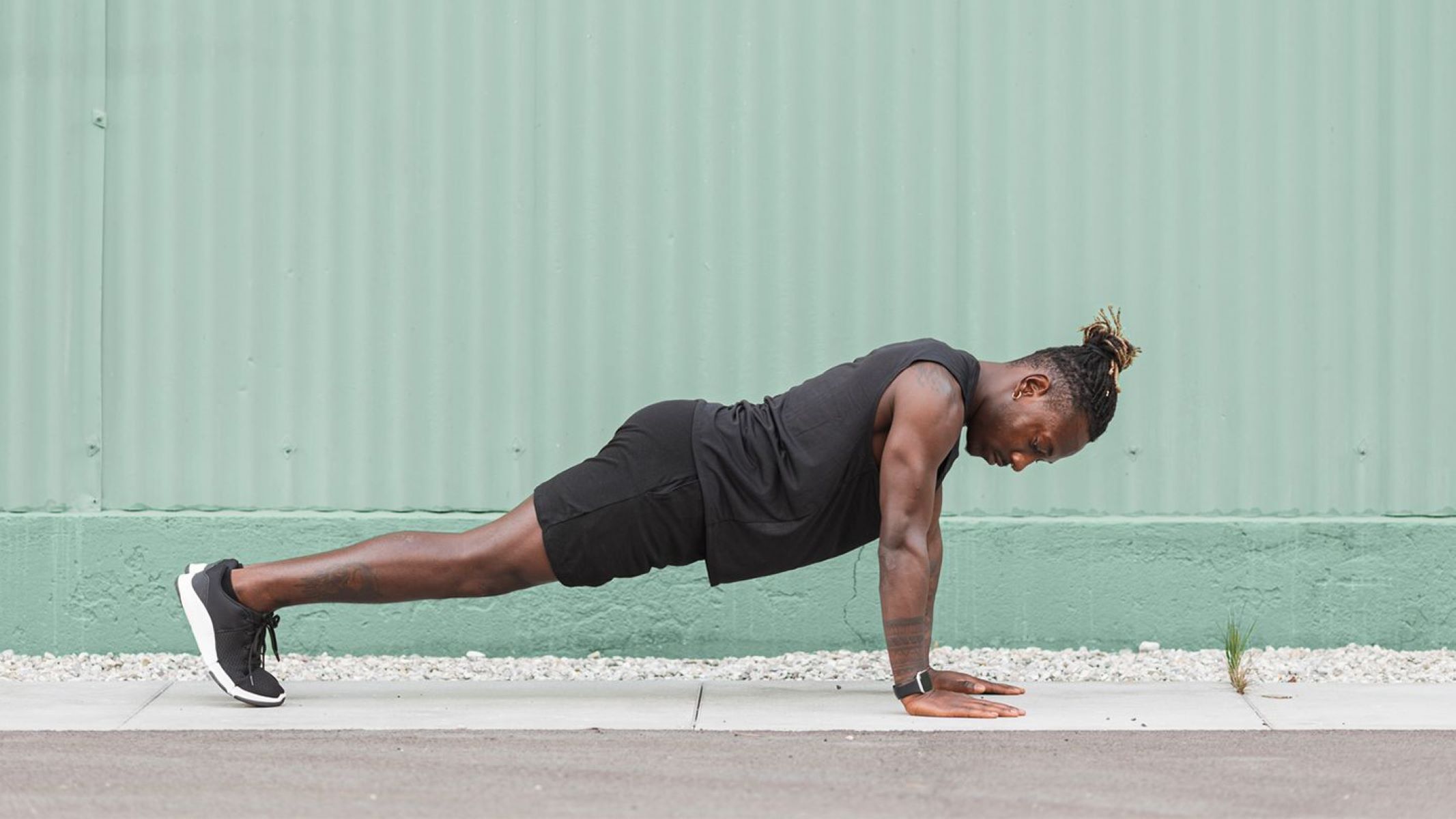Home>Misc>Featured>What Is A Good Example Of Muscular Endurance?


Featured
What Is A Good Example Of Muscular Endurance?
Modified: January 22, 2024
Discover a featured example of muscular endurance that will inspire and motivate you. Enhance your fitness routine with this powerful demonstration of strength and stamina.
Introduction
Welcome to the world of muscular endurance! If you’re interested in improving your physical fitness and stamina, understanding what muscular endurance is and how it can benefit you is essential. Muscular endurance refers to the ability of your muscles to perform repetitive contractions over an extended period without fatigue. It plays a vital role in various activities, from long-distance running to high-repetition weightlifting and circuit training.
By developing and enhancing your muscular endurance, you can experience numerous benefits in different aspects of your life. It not only helps you boost your overall athletic performance but also improves your daily functional activities. Whether you’re an athlete looking to enhance your overall stamina or an individual looking to improve your fitness level, muscular endurance is a crucial component to focus on.
In this article, we’ll explore what muscular endurance is and delve into some good examples that can help you understand how it’s applied in various activities. We’ll provide insights into these examples and highlight the characteristics that make them excellent representations of muscular endurance. So, let’s dive in and discover the fascinating world of muscular endurance and its applications!
Definition of Muscular Endurance
Muscular endurance refers to the ability of a muscle or group of muscles to exert force repeatedly over an extended period. It is a component of muscular fitness and is often contrasted with muscular strength, which is the amount of force a muscle can exert in one maximal effort. While muscular strength focuses on the amount of weight that can be lifted, muscular endurance focuses on how long the muscle can work before it fatigues.
During activities that require muscular endurance, such as running or cycling, the muscles must contract repeatedly over an extended period. This sustained effort requires the muscles to rely on aerobic energy production, which means they use oxygen to generate the necessary energy. By developing muscular endurance, individuals can perform repetitive movements or activities for longer durations without experiencing excessive fatigue.
The concept of muscular endurance is essential in both sports performance and everyday life. Athletes who participate in endurance-based sports, such as long-distance running, swimming, or cycling, rely heavily on muscular endurance. It allows them to sustain their efforts throughout the duration of the event, giving them a competitive edge.
Furthermore, muscular endurance is also a vital component of overall physical fitness. It plays a role in various functional activities, such as maintaining good posture, performing household chores, or even carrying grocery bags. By improving muscular endurance, individuals can effectively perform these activities without feeling overly fatigued.
To develop muscular endurance, individuals can engage in specific exercises and training methods that target the muscles’ ability to endure consistent contractions. These exercises typically involve performing high repetitions or sustained movements that challenge the muscles’ endurance capacity. By gradually increasing the intensity, individuals can progressively improve their muscular endurance over time.
In the next section, we’ll explore the benefits of muscular endurance and understand why it’s essential to incorporate it into your fitness routine.
Benefits of Muscular Endurance
Improving muscular endurance offers a wide range of benefits that can enhance your overall physical fitness and well-being. Whether you’re an athlete aiming to maximize your performance or someone looking to improve your daily activities, here are some key advantages of developing muscular endurance:
- Enhanced Athletic Performance: Muscular endurance is crucial for athletes participating in endurance-based sports, such as long-distance running, cycling, or swimming. By improving muscular endurance, athletes can sustain their efforts for longer periods, allowing them to perform at their best throughout the duration of an event.
- Decreased Risk of Injury: Having good muscular endurance can help prevent injuries related to muscle fatigue. Fatigued muscles are more prone to strains, sprains, and other muscular injuries. By improving endurance, individuals can enhance their muscle’s ability to withstand prolonged activity and reduce the risk of strain or injury.
- Improved Functional Activities: Muscular endurance plays a role in everyday activities such as standing, walking, or carrying groceries. By improving endurance, individuals can perform these tasks more efficiently and with less fatigue, making daily life more manageable and enjoyable.
- Increased Metabolic Rate: Muscular endurance exercises, especially those with high repetitions, can help boost your metabolism. As the muscles work continuously, they require more energy, leading to an increase in calories burned. This can contribute to improved weight management and overall metabolic health.
- Improved Endurance and Stamina: As the name suggests, developing muscular endurance leads to improved endurance and stamina. Whether it’s during sports activities or everyday tasks, having greater endurance allows you to perform for longer durations without experiencing excessive fatigue. This can greatly enhance your overall quality of life.
- Enhanced Muscle Tone and Definition: Muscular endurance exercises often involve repetitive contractions, which can help tone and define the muscles. This can lead to a more sculpted and toned appearance, improving aesthetics and boosting overall confidence.
These benefits highlight the importance of incorporating muscular endurance training into your fitness routine. Whether you’re an athlete aiming to excel in your sport or an individual looking to improve your overall fitness, focusing on improving muscular endurance can yield significant positive effects.
Characteristics of a Good Example of Muscular Endurance
When considering examples of muscular endurance, certain characteristics can help identify activities that effectively target and improve muscular endurance. These characteristics distinguish them as good examples of muscular endurance:
- Repetitive Movements: Good examples of muscular endurance involve repetitive movements or sustained contractions. The muscles must perform the same movement pattern multiple times without excessive fatigue. This challenges the muscles’ endurance capacity and builds their ability to sustain effort over time.
- Low to Moderate Intensity: Activities that focus on muscular endurance typically involve low to moderate intensity. The emphasis is not on lifting heavy weights or achieving one maximal effort but on maintaining a consistent effort level for an extended period. This allows the muscles to work aerobically and develop endurance without causing excessive strain or fatigue.
- Extended Duration: A good example of muscular endurance often requires an extended duration of activity. The muscles must work continuously for a significant period without tiring excessively. This prolonged effort challenges the muscles’ stamina and trains them to withstand sustained contractions.
- Full Range of Motion: Activities that promote muscular endurance generally involve a full range of motion. This ensures that the muscles are working through their complete range, improving their functional capacity and reducing the risk of injury. It also allows for more comprehensive muscle development.
- Progressive Overload: To effectively improve muscular endurance, good examples should incorporate progressive overload. This means gradually increasing the intensity, duration, or complexity of the activity over time. Progressive overload challenges the muscles to adapt and improve their endurance capacity continuously.
- Multijoint Movements: Exercises involving multiple joints and muscle groups are excellent examples of muscular endurance. These activities engage multiple muscles simultaneously, enhancing overall muscular stamina and endurance. Examples include activities like swimming, rowing, or circuit training.
By considering these characteristics, you can identify activities, exercises, or sports that are ideal for targeting and improving muscular endurance. Now, let’s explore some specific examples that encompass these characteristics and demonstrate the concept of muscular endurance in action.
Example 1: Long-distance Running
Long-distance running is an excellent example of an activity that requires and develops muscular endurance. It encompasses the characteristics of repetitive movements, low to moderate intensity, extended duration, full range of motion, progressive overload, and multijoint movements.
During long-distance running, muscles such as the quadriceps, hamstrings, calves, and glutes are continuously engaged as they work together to propel the body forward. The repetitive nature of the running motion challenges these muscles to endure sustained contractions for extended periods.
The intensity of long-distance running is typically moderate. The aim is not to sprint or maintain a maximum effort in one short burst but to sustain a steady pace over a potentially long period. This allows the muscles to work aerobically, relying on oxygen to generate the necessary energy and promote endurance.
Long-distance running also requires an extended duration of activity. Runners can cover miles or even marathons, requiring the muscles to work continuously for hours on end. This constant effort tests the muscles’ ability to endure and gradually improves their stamina.
To achieve further improvements in muscular endurance, progressive overload plays a vital role in long-distance running. Runners can gradually increase their training volume by adding more miles or incorporating interval training to challenge their muscles and improve their endurance capacity over time.
Moreover, long-distance running involves multijoint movements. It engages the muscles around the hips, knees, and ankles, working through a full range of motion. This helps improve overall muscle strength, endurance, and functional capacity.
By incorporating long-distance running into your fitness routine, you can experience the numerous benefits of muscular endurance. Not only will your cardiovascular fitness improve, but your muscles will become more resilient, allowing you to sustain prolonged activities with less fatigue.
Example 2: High-repetition Weightlifting
High-repetition weightlifting is another great example of an activity that emphasizes muscular endurance. It encompasses the characteristics of repetitive movements, moderate intensity, extended duration, full range of motion, progressive overload, and multijoint movements.
During high-repetition weightlifting, individuals perform exercises such as bicep curls, shoulder presses, or squats with a relatively lighter weight load. The focus is on performing a higher number of repetitions without compromising form or technique. This challenges the muscles to endure the repeated contractions and maintain proper form throughout the entire set.
The intensity in high-repetition weightlifting is moderate. While the weight load may be lighter compared to strength-focused training, the muscles still experience fatigue due to the cumulative effect of performing multiple repetitions. This sustained effort trains the muscles to endure moderate-intensity work for an extended period.
The duration of high-repetition weightlifting sets can vary depending on the specific workout routine or training program. However, the aim is to perform a significant number of repetitions, typically ranging from 10 to 20 or even more. This challenges the muscles to endure the prolonged effort required to complete the set or workout session.
Progressive overload is crucial in high-repetition weightlifting to improve muscular endurance. As individuals become more comfortable with a particular weight load and rep range, they can gradually increase the weight or add additional repetitions over time. This progressive overload ensures continued improvement in muscular endurance and stamina.
High-repetition weightlifting often involves multijoint movements that engage multiple muscle groups simultaneously. This includes exercises like squats, which work the quadriceps, glutes, and hamstrings, or bench presses, which engage the chest, shoulders, and triceps. The full range of motion required in these exercises challenges the muscles’ endurance capacity and improves overall functional strength.
By incorporating high-repetition weightlifting into your fitness routine, you can develop impressive muscular endurance. This can greatly benefit your overall athletic performance, functional daily activities, and muscular strength stamina.
Example 3: Circuit Training
Circuit training is a dynamic and challenging example of an activity that effectively targets and improves muscular endurance. It encompasses the characteristics of repetitive movements, varying intensity, extended duration, full range of motion, progressive overload, and multijoint movements.
In circuit training, individuals move through a series of exercises or stations with little to no rest in between. Each station focuses on a specific muscle group or movement pattern, allowing for a comprehensive full-body workout. The repetitive nature of circuit training challenges the muscles to endure consistent contractions throughout the entire circuit.
The intensity in circuit training can vary depending on the specific exercises and individual goals. It often involves alternating between cardio-based exercises and strength-based exercises, incorporating both high-intensity bursts and lower-intensity recovery periods. This varied intensity helps improve aerobic capacity and muscular endurance simultaneously.
Circuit training sessions can range in duration, typically lasting anywhere from 20 to 45 minutes. The goal is to perform a set number of repetitions or complete a specific time interval at each station before moving on. This sustained effort tests the muscles’ endurance and improves their ability to withstand extended periods of activity.
Progressive overload is an essential component of circuit training to continually challenge the muscles and improve endurance. This can be achieved by increasing the intensity or difficulty of each exercise, decreasing rest intervals, incorporating more challenging variations of exercises, or adding additional stations to the circuit.
Circuit training involves multijoint movements that engage multiple muscle groups simultaneously. Exercises such as squats, lunges, push-ups, and rows require coordination and control from various muscle groups, promoting overall muscular endurance and functional strength. The full range of motion in these exercises further enhances flexibility and mobility.
By incorporating circuit training into your fitness routine, you can experience a comprehensive and efficient workout that targets and improves muscular endurance. Circuit training not only challenges your muscles but also enhances cardiovascular fitness, making it a popular choice for individuals looking to improve overall physical fitness and stamina.
Example 4: Swim Sprints
Swim sprints are an excellent example of an activity that combines cardiovascular fitness and muscular endurance. They encompass the characteristics of repetitive movements, high intensity, varying duration, full range of motion, progressive overload, and multijoint movements.
In swim sprints, individuals perform short bursts of intense swimming, typically aiming to cover a specific distance or complete a certain number of laps in the shortest time possible. This requires powerful and continuous muscle contractions as the arms, legs, and core propel the body through the water.
Swim sprints involve high-intensity efforts that push the muscles to their limits. The goal is to swim at a fast and intense pace, challenging the muscles to endure the repetitive and forceful movements required to generate speed and power in the water. This intensity not only improves cardiovascular fitness but also develops muscular endurance.
The duration of swim sprints can vary depending on the distance or the number of laps swum. While each sprint may last only a short period, the cumulative effect of multiple sprints can provide an intense and endurance-building workout for the muscles involved in swimming.
Similar to other examples of muscular endurance, progressive overload is essential in swim sprints to continuously challenge the muscles and improve their endurance capacity. This can be achieved by increasing the distance covered or the number of laps swum, reducing rest intervals between sprints, or incorporating more challenging swimming techniques.
Swim sprints engage multijoint movements, working several muscle groups simultaneously. The arms, shoulders, back, chest, and core muscles all contribute to the propulsive movements required in swimming. This full range of motion in the water challenges the muscles’ endurance, improves swimming technique, and enhances overall muscle coordination and strength.
By incorporating swim sprints into your fitness routine, you can boost your cardiovascular fitness while developing impressive muscular endurance. Whether you’re a competitive swimmer or someone looking to improve their overall fitness, swim sprints provide a challenging and effective way to enhance muscular endurance and overall athletic performance in the water.
Conclusion
Muscular endurance is a vital component of physical fitness that plays a significant role in various activities. Developing and improving muscular endurance can enhance athletic performance, improve functional activities, and promote overall health and well-being.
Throughout this article, we’ve explored the definition of muscular endurance and its benefits. We’ve also discussed the characteristics of good examples of muscular endurance, including repetitive movements, varying intensity, extended duration, full range of motion, progressive overload, and multijoint movements.
We’ve examined specific examples that embody these characteristics, such as long-distance running, high-repetition weightlifting, circuit training, and swim sprints. Each of these activities showcases the concept of muscular endurance in action and highlights the importance of endurance training for improving overall fitness.
By incorporating activities that enhance muscular endurance into your fitness routine, you can experience numerous benefits, such as enhanced athletic performance, reduced risk of injury, improved functional activities, increased metabolic rate, improved endurance, and enhanced muscle tone.
Remember that developing muscular endurance is a gradual process, and it’s essential to start at your current fitness level and gradually progress over time. Consistency, proper technique, and proper rest and recovery are also vital aspects of improving muscular endurance safely and effectively. Consulting with a fitness professional can provide guidance and individualized recommendations for your specific goals and needs.
So, whether you’re aiming to conquer a long-distance race, improve your daily activities, or simply enhance your overall fitness level, incorporating exercises and activities that target and improve muscular endurance can help you achieve your goals.
Now, it’s time to lace up those running shoes, grab those dumbbells, hit that circuit, or dive into the pool and start improving your muscular endurance today!









